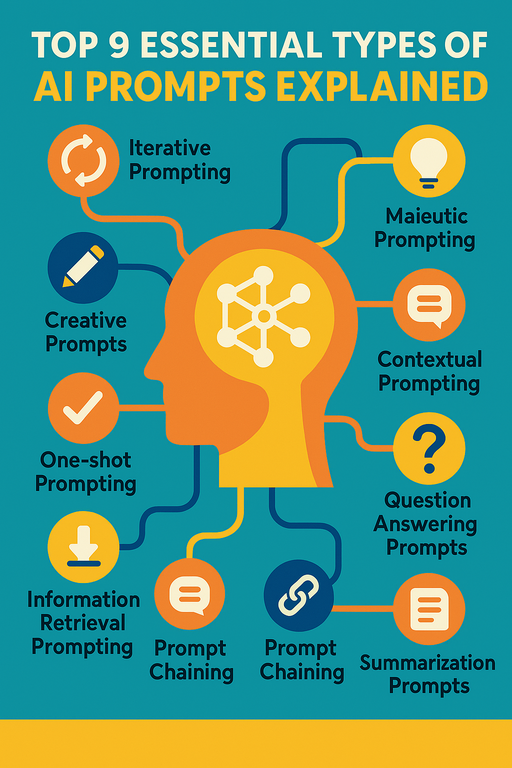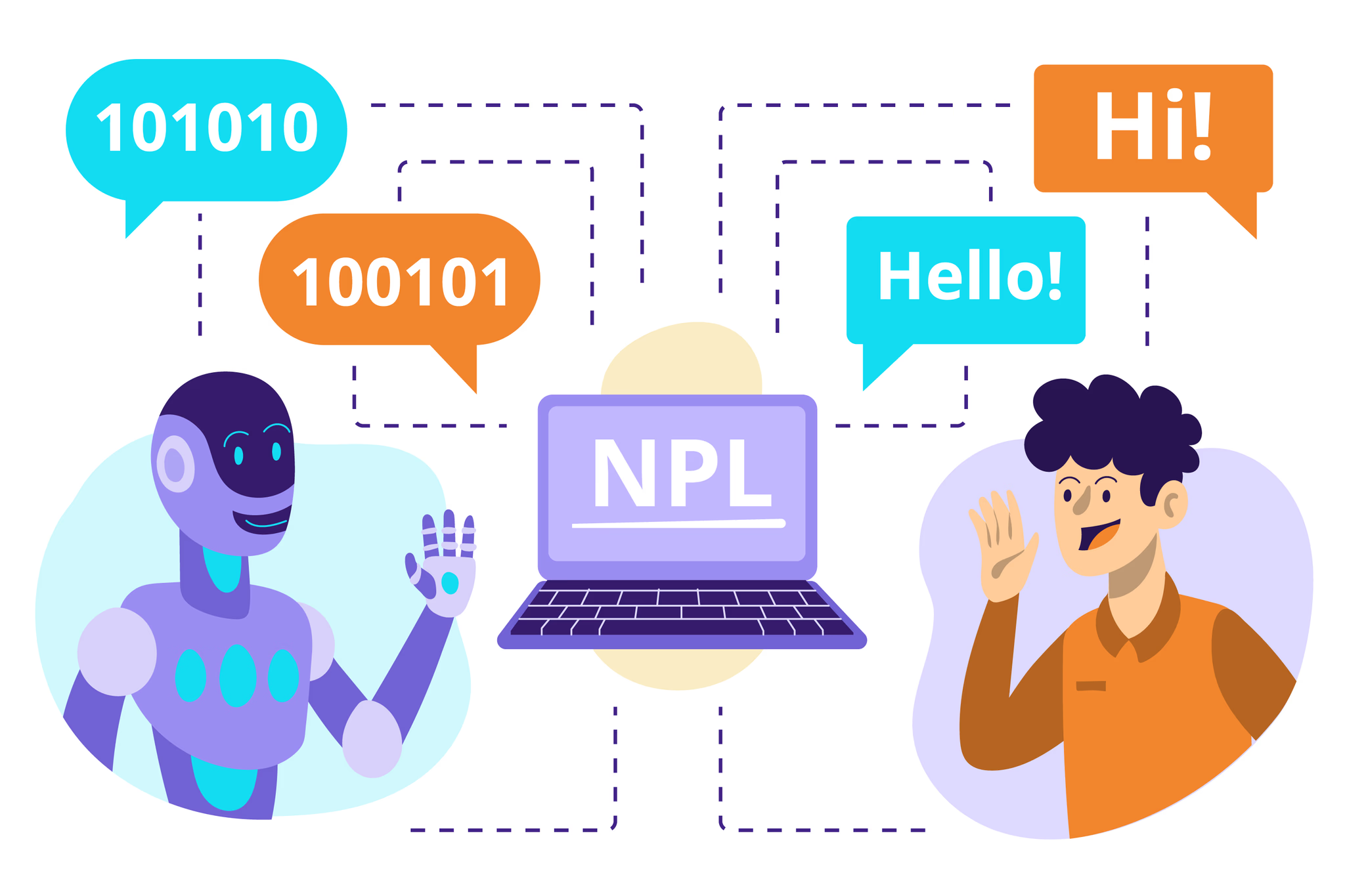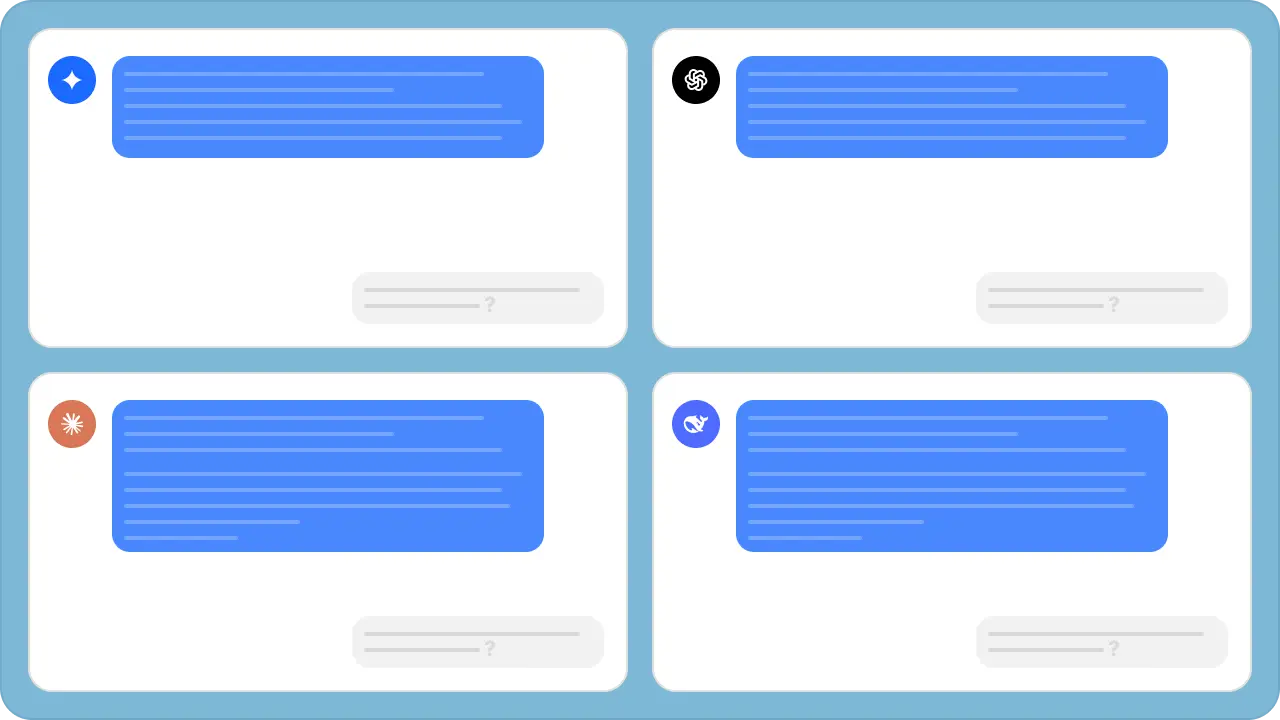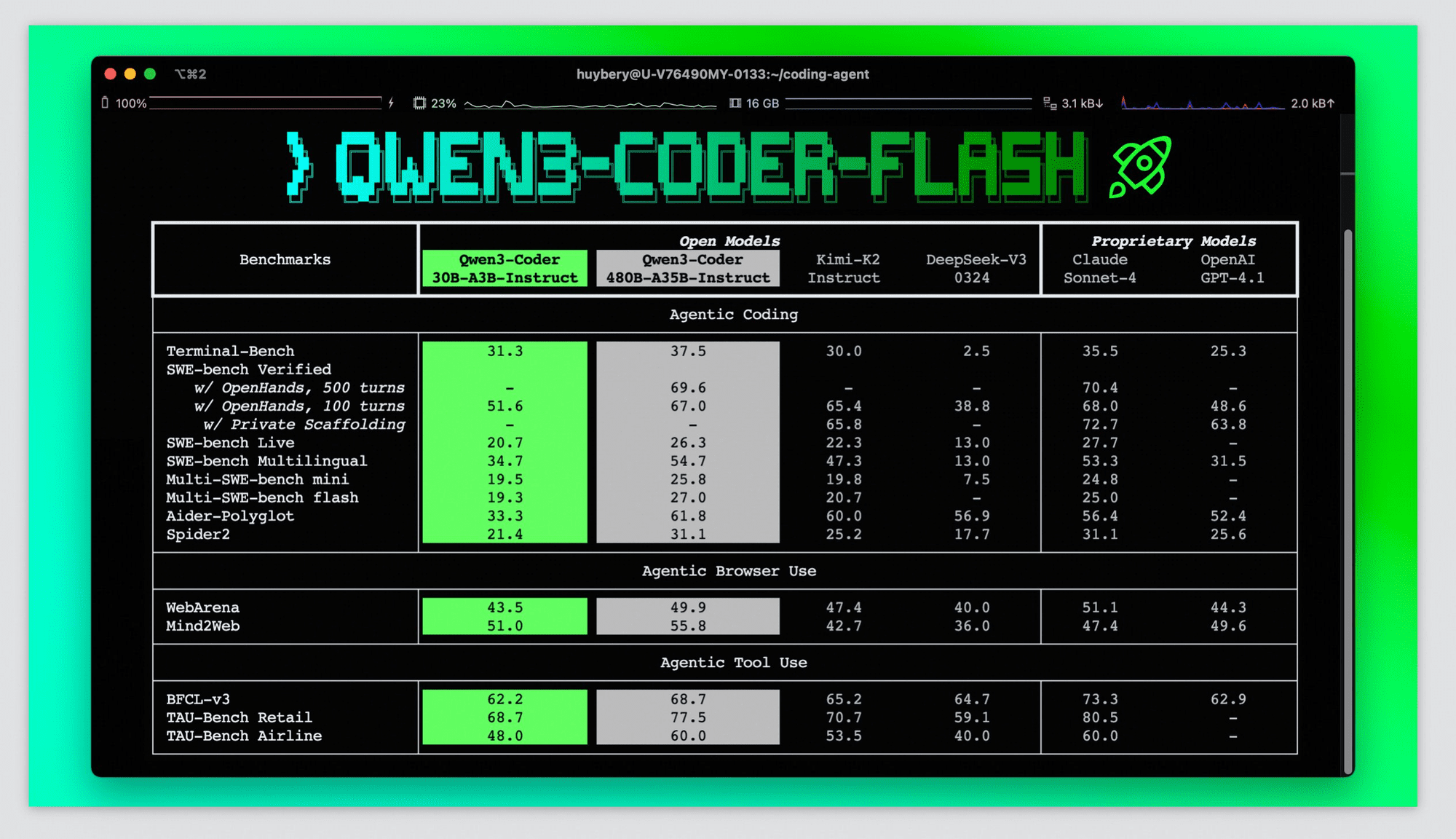Artificial intelligence technologies have rapidly advanced, making AI prompts a critical component for interacting effectively with these powerful systems across diverse applications. Understanding the different kinds of prompts is key to harnessing AI’s full potential.
There are numerous ways to instruct an AI, each designed for specific goals and yielding distinct outcomes. This guide explores the nine main types of AI prompts, detailing their characteristics and essential best practices. Whether you are developing AI-driven applications or using generative AI for creative tasks, mastering these prompt types will enable you to achieve more precise and useful results. Familiarity with these techniques allows you to guide AI behavior effectively, tailoring outputs to meet your exact requirements.
What are AI Prompts?
AI prompts are essentially instructions or queries provided to an artificial intelligence system to elicit a desired response or action. Think of them as carefully crafted guidelines that direct the AI on how to proceed. These prompts enable users to steer AI models for various tasks, including text generation, data analysis, code writing, image creation, and much more. The effectiveness of an AI often hinges on the clarity and detail of the prompt it receives. A well-constructed prompt helps the AI accurately understand the user’s intent and deliver relevant, high-quality output.

Key Types of AI Prompts
Different prompt strategies will guide an AI to produce varied results. Here are nine fundamental types of AI prompts:
1. Iterative Prompting
Iterative Prompting involves a cyclical process where you provide input to a language model and then refine your subsequent prompts based on the model’s responses. This back-and-forth allows the AI to build context and deepen its understanding gradually, leading to more coherent and relevant output over several turns.
In each cycle, the user supplies additional information, context, or revised instructions. This progressive refinement helps the model grasp the nuances of the task, generating more targeted and useful results. It’s particularly effective for breaking down complex problems into smaller, more manageable steps.
Best Practices for Iterative Prompting:
- Keep each prompt clear, concise, and focused on a specific aspect of the task. Avoid ambiguity.
- Introduce new information or instructions incrementally.
- Carefully evaluate the model’s output at each step and provide corrective feedback or clarification as needed.
- Track the iterative process, noting the prompts, the model’s responses, and any adjustments made.
- Be flexible and ready to adapt your prompting strategy based on the AI’s performance and the task’s requirements.
2. Maieutic Prompting
Maieutic Prompting, also known as Socratic Prompting, employs a strategy inspired by the Socratic teaching method. It focuses on guiding the AI model through a series of questions rather than providing direct answers or instructions.
The core idea is a collaborative exchange where the user poses questions that encourage the language model to explore, reason, and uncover insights or solutions independently. These prompts are typically open-ended, prompting the AI to reflect on its internal knowledge and reasoning capabilities.
Best Practices for Maieutic Prompting:
- Design questions thoughtfully to elicit the desired reasoning process or information discovery.
- Avoid leading questions that suggest a specific answer; aim for genuine exploration.
- Be patient, as the model may require several iterations of questioning to reach the desired understanding.
- Adapt your questioning strategy based on the AI’s responses and the direction of the conversation.
- Encourage the model to articulate its thought process or reasoning steps.
- Offer constructive feedback to reinforce effective reasoning pathways.
3. Creative Prompts
Creative Prompts are designed to stimulate a language model’s generative capabilities, encouraging it to produce original, imaginative, and innovative content. These prompts move beyond factual recall or standard task completion.
Typically, creative prompts provide a broad, open-ended framework, allowing the AI significant freedom in its response. They might involve elements of fantasy, speculation, or unconventional scenarios to push the model beyond conventional thinking. Deliberately leaving certain details vague encourages the AI to fill the gaps creatively. The aim is to foster divergent thinking, where the model generates multiple, diverse, and potentially unexpected outputs.
Best Practices for Creative Prompts:
- Craft prompts that challenge the model with thought experiments, hypothetical situations, or abstract concepts.
- Encourage exploration of unusual perspectives or even absurd ideas.
- Avoid overly rigid constraints; allow room for interpretation.
- Incorporate stimuli like storytelling elements or visual concepts to inspire creativity.
- Initially, refrain from judgment to allow unconventional ideas to surface.
- Employ iterative feedback to guide the creative output toward desired themes or qualities.
4. One-shot Prompting
One-shot Prompting contrasts with iterative methods by providing the language model with a single, comprehensive prompt containing all necessary context, instructions, and objectives upfront. There is no intermediate feedback or refinement loop.
This type of prompt is information-dense, designed to give the AI everything it needs to generate the complete desired output autonomously. It relies on the model’s ability to process and synthesize a large amount of information from a single instruction set. One-shot prompts are often tailored for specific, well-defined tasks like writing a complete story draft, answering a multifaceted question, or generating a detailed plan.
Best Practices for One-shot Prompting:
- Invest considerable effort in crafting the prompt, ensuring it is thorough, unambiguous, and provides sufficient context and guidance.
- Clearly define the task, goal, and desired format of the output.
- Pay meticulous attention to wording, structure, and phrasing to minimize misinterpretation.
- Anticipate potential ambiguities and address them within the prompt.
- Test the prompt rigorously to see if the model consistently understands and executes the instructions correctly.
- Be prepared to switch to iterative methods if the one-shot approach proves insufficient for complex tasks.
5. Information Retrieval Prompting
Information Retrieval Prompting focuses on extracting specific pieces of factual information from a given context or the language model’s underlying knowledge base. The goal is precise data extraction rather than generative or conversational output.
The prompt is usually formulated as a direct question or a request targeting specific facts relevant to the provided context. The AI is expected to retrieve and present this information accurately and concisely. The response should be focused solely on answering the query without unnecessary elaboration or creative additions.
Best Practices for Information Retrieval Prompting:
- Formulate prompts that clearly state the exact information being sought. Use precise keywords.
- Provide necessary context (e.g., domain, topic) to help the model pinpoint the relevant information.
- Consider structuring the prompt to request a formatted response (e.g., list, table) if applicable.
- If the initial response is inadequate, refine the prompt by rephrasing or adding more specific details.
- Verify the retrieved information for accuracy using reliable sources when possible.
- Experiment with different prompt structures and wording to optimize retrieval performance.
6. Contextual Prompting
Contextual Prompting aims to generate AI responses that are highly tailored to a specific context, scenario, or ongoing interaction history provided within the prompt. This goes beyond simple instruction following to incorporate situational nuances.
The prompt includes detailed contextual information, such as background details, character profiles, setting descriptions, or specific constraints related to a task or conversation. The language model uses this context to generate responses that are coherent, consistent in tone and style, and relevant to the established scenario. Contextual prompts are crucial for maintaining continuity in dialogues or multi-step tasks and for personalizing interactions based on user preferences or history.
Best Practices for Contextual Prompting:
- Provide rich and relevant context, covering characters, setting, tone, objectives, and constraints.
- Structure prompts to maintain a logical flow, referencing previous turns or established facts.
- Ensure alignment in style, tone, and formality between the prompt and the desired output.
- Balance providing context with allowing the model some flexibility and creativity within that framework.
- Continuously evaluate responses for contextual relevance and refine prompts accordingly.
- Explore techniques like role-playing or task-oriented dialogue structures within the contextual framework.
7. Prompt Chaining
Prompt Chaining is a technique for tackling complex tasks by breaking them down into a sequence of smaller, interconnected prompts. The output of one prompt often serves as input or context for the next, creating a chain reaction that progressively builds towards the final goal.
This method deconstructs a large objective into manageable sub-tasks. Each prompt in the chain addresses a specific step. The language model processes these prompts sequentially, with each response refining or adding to the work done in previous steps. This sequential approach can improve the manageability of complex problems and enhance the transparency of the AI’s reasoning process.
Best Practices for Prompt Chaining:
- Carefully analyze the complex task to identify logical sub-tasks suitable for sequential prompting.
- Design the sequence of prompts to flow logically and coherently from one step to the next.
- Ensure each individual prompt is clear, specific, and focused on its designated sub-task.
- Monitor the model’s output at each step and be prepared to adjust subsequent prompts if needed.
- Plan for potential errors or unexpected responses, perhaps by including fallback prompts or error-handling steps.
- Evaluate the overall performance of the chain and refine the individual prompts or sequence for better results.
8. Question Answering Prompts
Question Answering (QA) Prompts are specifically designed to elicit direct, factual answers from language models in response to user queries. They focus on knowledge retrieval and concise information delivery.
These prompts are typically phrased as clear questions, often using standard question words (who, what, where, when, why, how). The expectation is that the AI will access its knowledge base to provide an accurate and informative answer directly addressing the question, without generating lengthy or conversational text. The scope is usually well-defined to ensure the response is relevant to the user’s specific information need.
Best Practices for Question Answering Prompts:
- Formulate questions that are unambiguous and target a single piece of information or fact.
- Include relevant context within the prompt (e.g., subject area, time frame) to narrow the search space.
- Experiment with different question formats (open-ended, multiple-choice) to test the model’s capabilities.
- Verify the accuracy of the answers provided by the language model, especially for critical information.
- If the initial answer is insufficient, refine the question by adding detail, rephrasing, or breaking it into smaller sub-questions.
- Regularly evaluate the model’s QA performance across diverse question types and topics.
9. Summarization Prompts
Summarization Prompts instruct a language model to generate concise and informative summaries of longer texts, documents, or pieces of information. The goal is to distill the essential content into a shorter format.
The AI is expected to identify and extract the key points, main ideas, and critical details from the source material and present them coherently. The summary must accurately reflect the core message of the original text while omitting extraneous details. It should be logically structured and easy for the user to digest quickly. The desired length or level of detail can often be specified.
Best Practices for Summarization Prompts:
- Provide the language model with the specific text or document to be summarized.
- Clearly state the goal of the summary (e.g., extract main conclusions, list key takeaways, provide a brief overview).
- Specify constraints like desired length (word count, number of sentences/paragraphs) if applicable.
- Indicate the intended tone, style, or formality for the summary.
- Emphasize the need for factual accuracy and avoiding the introduction of misleading information.
- Review the generated summary and provide iterative feedback for refinement (e.g., request more conciseness, better organization).
- Assess the quality and utility of the summaries generated for different types of input texts.
Wrapping Up
Understanding these nine fundamental types of AI prompts provides a powerful toolkit for interacting with language models more effectively. Each prompt type unlocks different AI capabilities, enabling you to accomplish a wide range of tasks, from generating creative content and analyzing data to answering specific questions and summarizing complex information.
As artificial intelligence continues to evolve, proficiency in crafting effective prompts—a skill often referred to as prompt engineering—will become increasingly valuable. Whether you are a developer, content creator, researcher, or simply an AI enthusiast, mastering these techniques will allow you to leverage AI more successfully.
Explore the AI tools available on Sdigi AI Tools to see how different applications utilize these prompting methods, and find the AI solution that best fits your needs for harnessing the power of targeted AI interaction.








